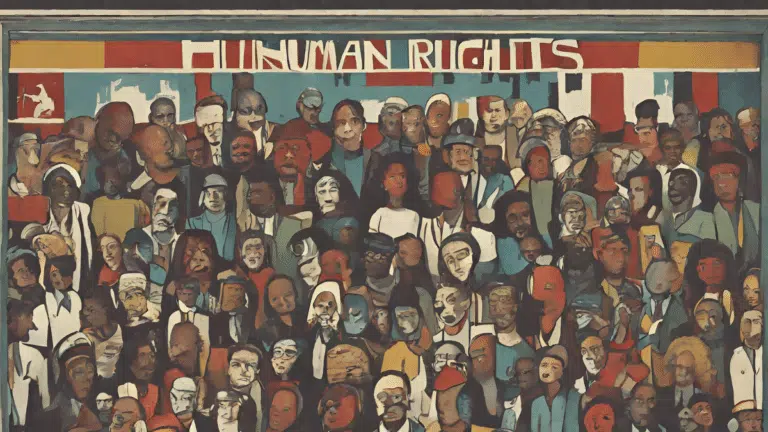Legal Literacy – As we all know, the hierarchy of laws and regulations in Indonesia consists of many types of regulations, ranging from the 1945 Constitution of the Republic of Indonesia, MPR Decree, laws to district / city regional regulations (perda).
Of the many laws and regulations, there are often regulations that regulate similar things, but contradict each other, causing confusion in their implementation. So it is important for us to be able to understand the hierarchy of laws and regulations so that later we understand which regulations should be used.
Definition of Legislation
The definition of laws and regulations is written regulations that contain legal norms that are binding in general and are formed or stipulated by state institutions or authorized officials through procedures stipulated in the Laws and Regulations.
Meanwhile, the word hierarchy itself in the Big Indonesian Dictionary (KBBI) means a sequence of levels or levels. Thus, understanding the hierarchy of laws and regulations means finding out the order of the levels of laws and regulations in Indonesia.
Legal Basis of Legislation
To be able to know the hierarchy of laws and regulations, of course we must refer to Law Number 12 of 2011 which is an update of Law Number 10 of 2004 and was last updated through Law Number 13 of 2022 concerning the Formation of Legislation.
Article 7 paragraph (1) of the Law states that the types and hierarchy of laws and regulations consist of:
- Constitution of the Republic of Indonesia Year 1945
- Decree of the People’s Consultative Assembly
- Law / Government Regulation in Lieu of Law
- Government Regulation
- Presidential Regulation
- Provincial Regional Regulations, and
- District/City Regional Regulation
Then, Article 7 paragraph (2) of the Law states that the legal force of laws and regulations is in accordance with the hierarchy as referred to in paragraph (1). Thus, from these two provisions we can understand that in hierarchy/order, according to Article 7 paragraph (1), that the 1945 Constitution of the Republic of Indonesia is the legislation that has the highest order, then the second order is the MPR Decree, and so on up to district/city regulations. Likewise, with the nature of its legal force, the 1945 Constitution has the highest legal force compared to other laws and regulations.
Read More: The State in the Ideal Portrait of a Political Law: For People’s Sovereignty
Important Principles of Legislation
And keep in mind that in the order of laws and regulations, the principle of lex superior derogat legi priori applies, which means that laws and regulations that have a lower position must not conflict with laws and regulations that have a higher position above them.
Examples of Problematic Legislation
Although there is the principle of lex superior derogat legi priori, in practice there are still regulations that conflict with laws and regulations that are higher in position. One example can be seen in the decision of the Constitutional Court Number 85/PUU-XI/2013 which through the decision of the Constitutional Court canceled all provisions contained in the Act Number 7 of 2004 concerning Water Resources (SDA) because the law is considered contrary to the legislation above it, namely the 1945 Constitution of the Republic of Indonesia, specifically Article 33 paragraphs (1) and (2) of the 1945 Constitution of the Republic of Indonesia.
Status and Position of Laws and Regulations Not Mentioned in Article 7
In addition to what is mentioned in Article 7 paragraph (1), if we look closely together, there are actually other laws and regulations that we often encounter, such as ministerial regulations issued by each ministry, prosecutor’s regulations, police regulations, and other regulations which are in accordance with the definition of a statutory regulation as mentioned earlier.
Police regulations, for example, are of course written rules that contain legal norms that are generally binding and are formed or established by state institutions or authorized officials. Although police regulations and regulations issued by other state institutions are not explicitly mentioned in article 7 paragraph (1) of Law No.12/2011 on the Formation of Legislation, they are still recognized as laws and regulations.
This can be understood by the provisions of Article 8 paragraph (1) which states that types of laws and regulations other than those referred to in the hierarchy of laws and regulations in Article 7 paragraph (1) include regulations stipulated by the People’s Consultative Assembly, the House of Representatives, the Regional Representatives Council, the Supreme Court, the Constitutional Court, the Supreme Audit Agency, the Judicial Commission, Bank Indonesia, Ministers, agencies, institutions, or commissions of the same level established by law.
As well as the provisions of article 8 paragraph (2) which states that the Legislation as referred to in paragraph (1) is recognized and has binding legal force as long as it is ordered by higher Legislation or formed based on authority. This means that regulations issued by bodies or institutions other than those mentioned in Article 7 paragraph (1) are also recognized as laws and regulations and have binding legal force.







